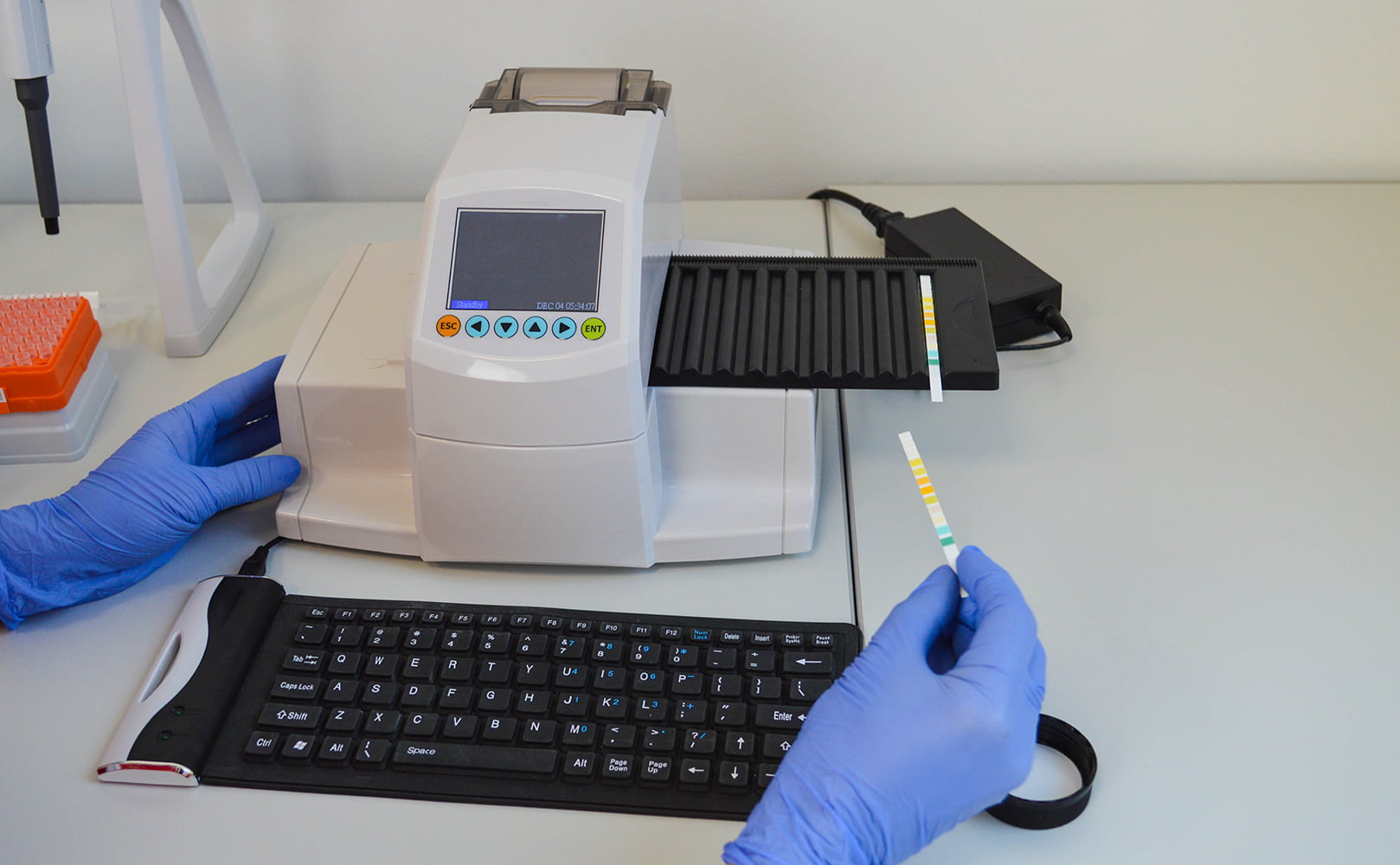What Are the Signs of Lead in Tap Water?
Written by: Gene Fitzgerald // Last Updated: Oct 11, 2022
This page may contain affiliate links. If you buy a product or service through such a link we earn a commission at no extra cost to you. Learn more.
When the residents of Flint, Michigan turned on their taps to see brown sludge – back in 2014 – they were beyond petrified. Sadly, their water supply was significantly contaminated with lead.
What’s surprising is that roughly 20 million Americans still receive water through lead service lines, exposing them to high concentrations of toxic metal.
The worst news is there are no obvious signs of lead in water since it leaves no flavor or smell. You can never know for sure lest you conduct a water test.
In this guide, we will go through tell-tale signs you need to look for if you are worried about lead contamination in your water supply. Nevertheless, we strongly recommend hiring a certified laboratory to conduct a comprehensive water test to get accurate results.
Key Takeaways
- Lead-contaminated water cannot be detected by sight, smell, or taste at all.
- You need to have your water tested in order to find out if it contains lead.
- Symptoms of short-term lead consumption, such as abdominal pain or headaches, only show when someone is exposed to extremely high levels.
How Do I Know If My Water Is Contaminated with Lead?
You cannot know if there’s lead in your water by simply looking at it.
In fact, even if your water runs clear, has no unusual smell or taste, or has never caused any serious harm to your family, it could still be heavily contaminated by lead.
We advise getting your water tested by a certified laboratory or checking your home’s plumbing.
Symptoms & Signs of Lead Exposure Through Drinking Water
Unfortunately, lead is a silent attacker. There are no apparent signs or symptoms that can alarm you of imminent lead exposure.
Symptoms will take up too long to show and only when you are already exposed to extremely high levels. Therefore, many people who fear their water supply is contaminated rely on a water test to eliminate any guesswork.
Children
When symptoms do start to show up, they first appear in young kids (under 6). If you are concerned, you should get a blood test for diagnosis. A test will detect elevated levels of lead easily.
Here are a few symptoms to look out for.
- Abdominal pain
- Loss of appetite
- Weight loss
- Fatigue
- Irritability
- Seizures
- Hearing loss
- Learning disabilities
- Developmental delay
Adults
- Muscle pain
- Headaches
- Memory issues
Acute Toxicity
Acute lead toxicity is rare. However, here are a few symptoms of acute toxicity:
- Dullness
- Irritability
- Poor attention span
- Weakness
- Memory loss
- Anemia
- Convulsions
In severe cases, coma or death can also occur.
Chronic Toxicity
Chronic lead toxicity is much more common in children. The most obvious signs to look out for are changes in learning patterns, irrational behavior, and developmental delay.
Who’s at Risk?
Everyone’s at risk of lead poisoning since there is no safe level of lead, neither in blood nor in drinking water. Even if consumed in low amounts, it can accumulate in your body to cause severe adverse health effects over time.
With that said, there are some groups of people who are far more vulnerable to lead contamination. For example, unborn babies and young children (under the age of six) are at a significantly higher risk of irreversible damage caused by this potent neurotoxin.
It is because children absorb more lead than adults since they have growing bones and organs. Moreover, their brains and nervous systems are more sensitive to the harmful effects of lead.
In short, kids exposed to high levels of lead in their early years often struggle with a significant impact on growth, development, learning abilities, hearing and speech problems.
Similarly, lead can cross the placental barrier and cause low birth weight in fetuses or premature delivery, and in severe cases it can even lead to miscarriage.
How Does Lead Enter Your Water?
So how does lead enter into our water supplies? To put it simply, lead enters your drinking water due to a chemical reaction in lead-containing plumbing fixtures, pipes, and solder.
As water passes through corroding lead pipes, toxic lead ions can flake or dissolve into the water. The longer your water stays in contact with the infected components, the higher the chances of severe contamination.
Moreover, if the water has a low pH level (acidic) or contains certain elements – such as dissolved oxygen and chlorine – it reacts more strongly with lead in pipes.
It is also important to note here that lead is a highly corrosion-resistant metal in most environments. Therefore, corrosion of lead pipes doesn’t happen overnight. It’s a long process and takes years and years to get to a point where lead pipes become toxic.
From there on, it’s a downhill road.
Other Sources of Lead Contamination
Sturdy yet malleable, the incredibly useful metal lead has been used over the years to make plenty of household and industrial products. From lipsticks, paint, and pigments to jewelry, tiles, and batteries, you’ll find it everywhere.
According to the Centers for Disease Control and Prevention (CDC), the most common source of lead poisoning is dust and chips of old lead-based paint.
It’s an unfortunate truth, but it’s unlikely to achieve a 100% lead-free home. What you can do instead is try to be more mindful while making purchases to minimize your exposure.
Prevention: Reducing Lead in Drinking Water
Apart from minimizing your exposure to lead from other sources, it’s equally important to treat lead in your drinking water. Not everyone can go about replacing the plumbing around his house.
Similarly, it will take years before the US government has replaced all lead service lines with a new network of water distribution channels.
Unfortunately, heating or boiling water does not remove lead. In reality, boiling the water can increase the concentration of lead as some water evaporates.
It seems like the best option is to use a water filtration system that can completely eliminate or reduce lead.
Water Filters
Thankfully, lead is easy to filter out using the right kind of water filter. Many filter pitchers, under sink water filters, whole house systems and other types claim to remove/reduce the concentration of the notorious metal.
Depending on the level of lead in your source water and the presence of other contaminants, you can select the ideal filtration device for your household.
Look for carbon-based filters that can remove over 95% of lead. Or a reverse osmosis system which gets rid of up to 99% lead. KDF filter media and ion exchange resin work, as well.
Lastly, always use a water filter with an NSF standard 53 certification specifically for the removal of lead.
If you have any questions about signs of lead in tap water please don’t hesitate to leave a comment below!
Information provided on BOS is for educational purposes only. The products and services we review may not be right for your individual circumstances.
We adhere to strict editorial guidelines. Rest assured, the opinions expressed have not been provided, reviewed, or otherwise endorsed by our partners – they are unbiased, independent, and the author’s alone. Our licensed experts fact-check all content for accuracy. It is accurate as of the date posted and to the best of our knowledge.




